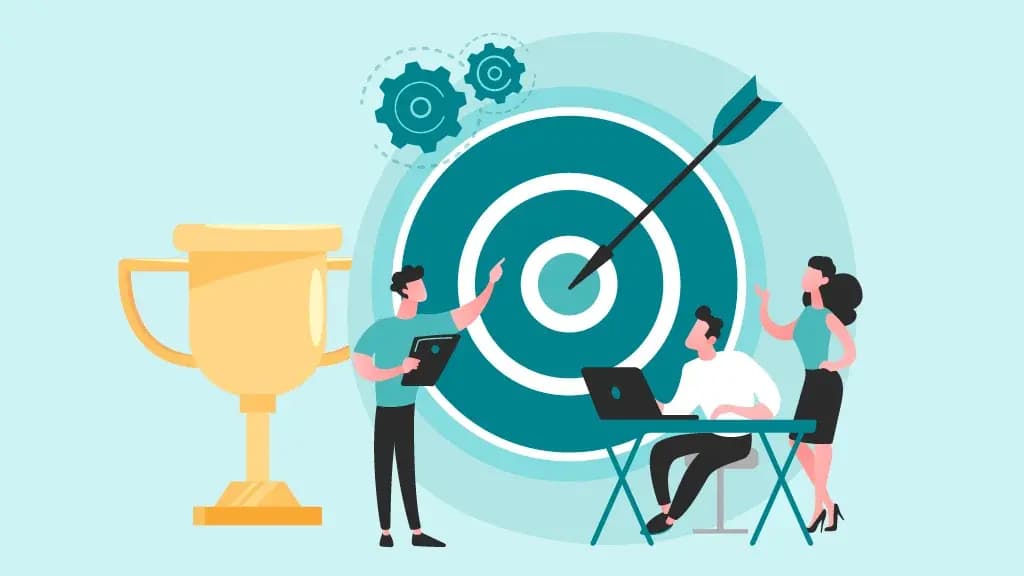5 Components of a Total Rewards Strategy That Retains Top Talent

Team AdvantageClub.ai
July 14, 2025

Let’s break down the five essential components of a Total Rewards program, each reimagined for the digital age. We’ll also explore how innovative engagement platforms—such as those from AdvantageClub.ai—are making it easier than ever to personalize rewards.
1. Recognition: Instant, Impactful, and Inclusive
One of the primary factors influencing engagement and retention is recognition, which is often overlooked. When employees genuinely feel appreciated and receive timely recognition, they are more likely to stay driven and loyal.
Elements of effective recognition:
- Timeliness: Acknowledging achievements right when they happen.
- Personalization: Making recognition meaningful for each individual.
- Inclusivity: Ensuring that everyone, from interns to senior leaders, has the opportunity to be recognized.
How engagement platforms elevate recognition:
- Enable peer-to-peer shoutouts and team celebrations.
- Track milestones, such as work anniversaries, project completions, and personal achievements.
- Suggest opportunities to recognize employees based on their contributions.
Recognition Ideas for Every Team
- Digital badges for hitting project milestones.
- Public shoutouts during meetings.
- Personalized thank-you notes from leaders.
- Points-based systems that are redeemable for rewards.
2. Compensation: Precision and Personalization
Modern compensation strategies focus on:
- Market alignment: Regularly benchmarking salaries so pay stays competitive.
- Internal equity: Creating clear, fair structures that ensure everyone is treated equally.
- Personalized incentives: Tailoring bonuses and rewards to individual achievements and impact.
How engagement platforms enhance compensation:
- Analyze real-time market data to recommend fair pay ranges.
- Automate merit increases and bonuses based on performance.
- Offer flexible incentives, like spot bonuses, digital gift cards, or unique experiences.
Example: Instead of waiting for annual reviews, AI-powered strategies for a meaningful recognition program provide continuous feedback and instant rewards, making recognition timely and meaningful.
3. Benefits: Dynamic, Data-Driven Offerings
Key features of a modern benefits program:
- Customization: Letting employees choose benefits that suit them best.
- Flexibility: Offering remote work options, mental health support, and family care resources.
- Continuous improvement: Updating benefits regularly based on employee feedback and usage.
How engagement platforms support better benefits:
- Aggregate employee preferences to tailor benefits packages effectively.
- Provide dashboards that enable employees to understand and maximize their benefits easily.
- Adjust offerings as employees move through different life stages.
For example:
- A single parent might prioritize flexible hours and childcare support.
- A recent graduate might value help with student loans or access to professional networks.
4. Well-being: Proactive Support for Every Employee
A comprehensive well-being program includes:
- Physical health: Providing healthcare access, fitness programs, and nutrition resources.
- Mental health: Offering confidential counseling, stress management tools, and peer support.
- Work-life balance: Encouraging clear boundaries and time off.
How engagement platforms foster well-being:
- Check in regularly to monitor employee sentiment.
- Spot early signs of burnout or disengagement.
- Suggest timely solutions—like wellness breaks, flexible schedules, or reminders to use PTO.
Ways to Promote Employee Well-being
- Offer wellness stipends or reimbursements.
- Organize health challenges or mindfulness workshops.
- Make mental health resources easily accessible.
- Motivate employees to take regular breaks and time away from screens.
5. Work-Life Balance: Intelligent Flexibility
Modern approaches to work-life balance include:
- Flexible scheduling: Giving employees more choice about when and where they work.
- Remote and hybrid options: Supporting productivity outside the office.
- Time-off policies: Actively encouraging vacations and mental health days.
How AI-engagement platforms support balance:
- Analyze work patterns and suggest personalized flexibility options.
- Send reminders for breaks or to take vacation days.
- Survey employees to identify and address barriers to achieving a work-life balance.
Supporting Work-Life Balance can look like this:
- Introducing “no meeting” days to reduce burnout.
- Offering resources for remote work setups.
- Encouraging leaders to model healthy boundaries.
- Recognizing and celebrating personal milestones outside of work.
Total Rewards Strategy in an AI-First Engagement Environment
Key features of an AI-first Total Rewards Strategy
- Personalization at Scale: Rewards, benefits, and recognition tailored to each employee’s preferences and life stage.
- Real-Time Responsiveness: Quick adjustments based on feedback, performance, and engagement data.
- Data-Driven Decision-Making: Using workforce insights to optimize investments and ensure fairness.
- Seamless Integration: Uniting compensation, benefits, well-being, and recognition in one easy-to-use platform.
- Proactive Engagement: Identifying early signs of disengagement to enable swift action by HR.
- Transparent Communication: Keeping employees clearly informed about their total rewards to increase trust and perceived value.
Platforms like AdvantageClub.ai are leading the charge. They are helping HR teams with strategic budgeting for impactful recognition programs and delivering a dynamic and engaging total rewards experience.
The Future of Total Rewards is Personalized and Engaging
A truly modern approach to Total Rewards Strategy is responsive, data-driven, and centered on people’s real needs. And thanks to innovative engagement platforms like AdvantageClub.ai, companies can now:
- Personalize rewards and recognition at scale.
- Continuously improve benefits and well-being programs.
- Foster a culture of appreciation and flexibility.





